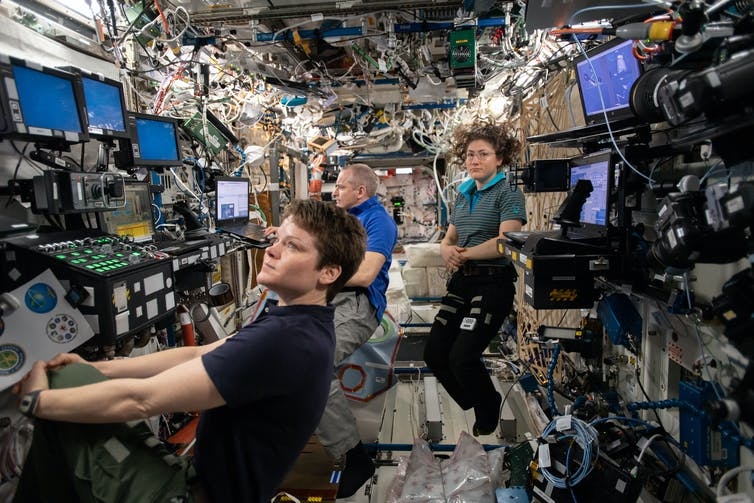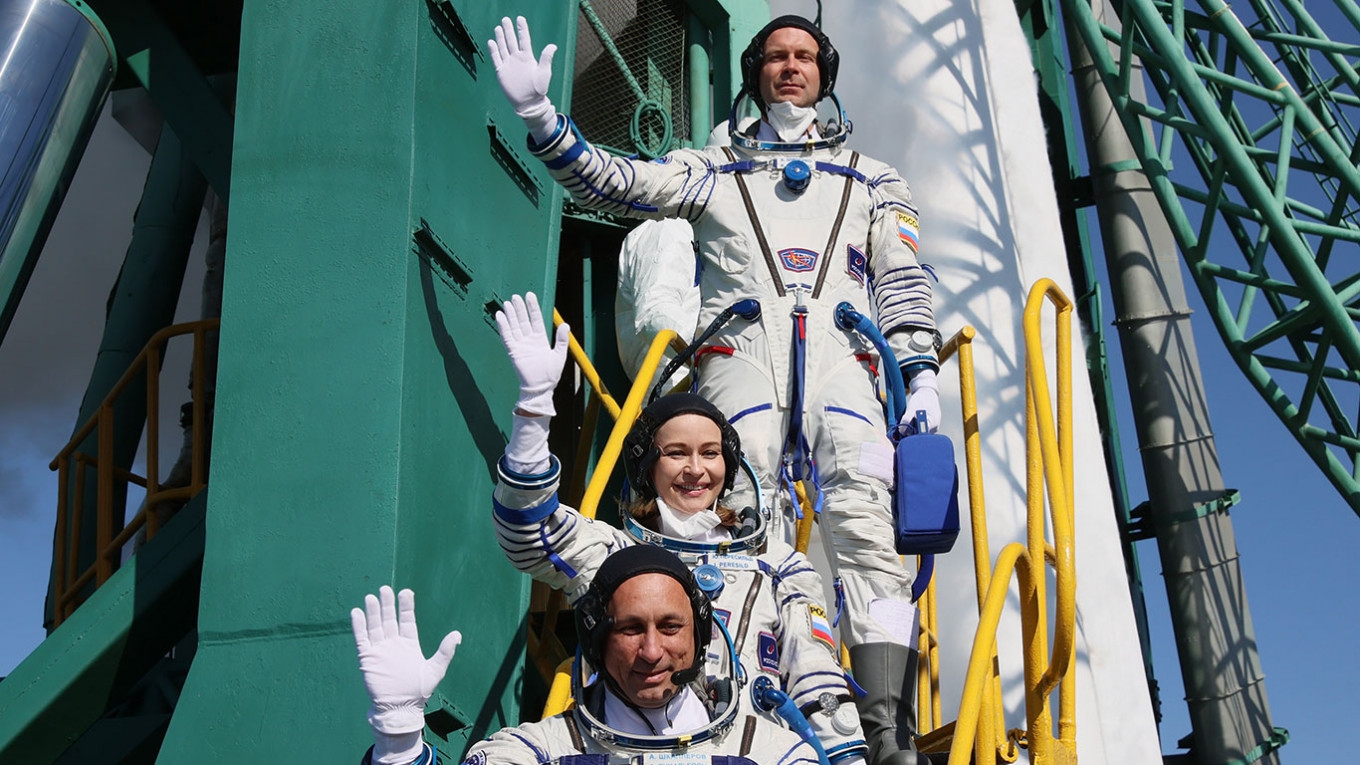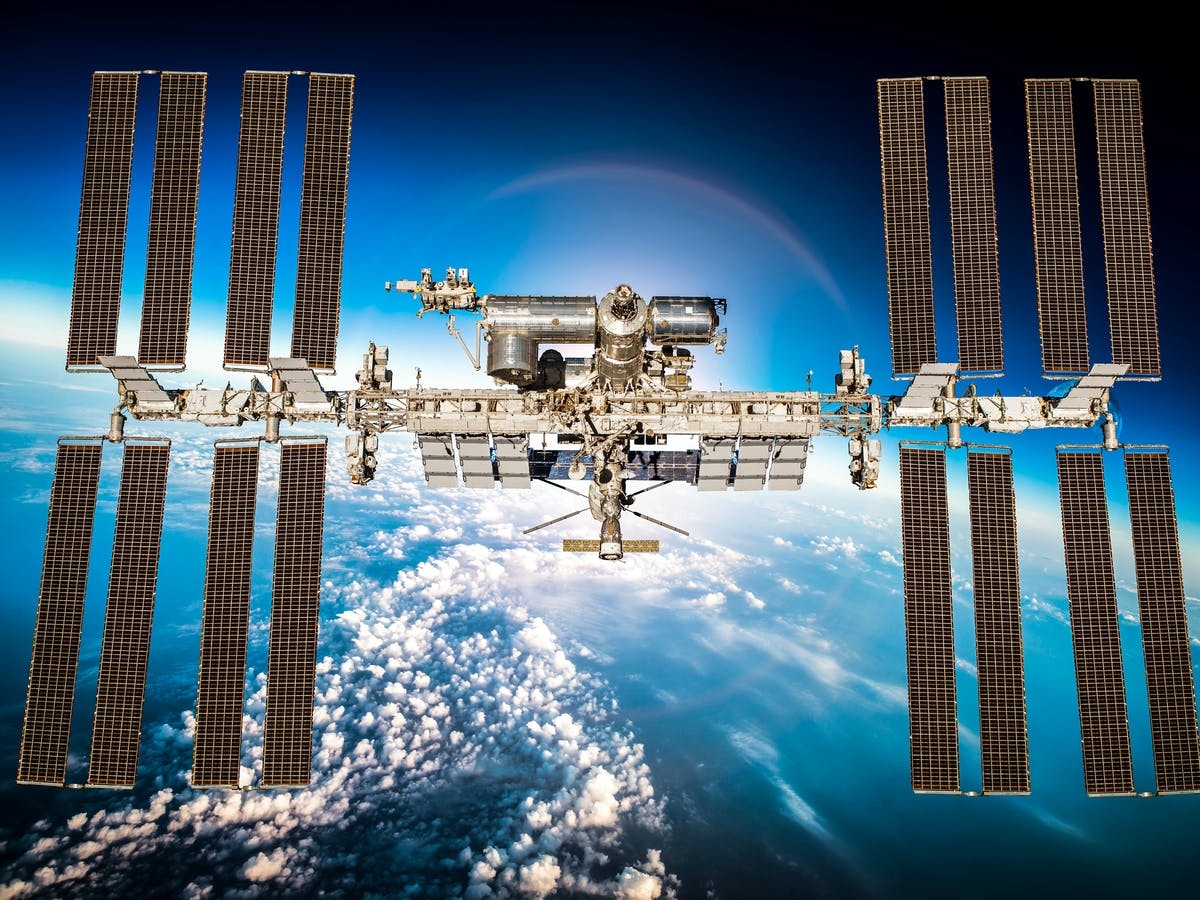What Is The Most Expensive Man-Made Object In The World?
 |
| World’s Most Expensive Man-Made Object: International Space Station |
A partnership between European countries (represented by ESA), the United States (NASA), Japan (JAXA), Canada (CSA), and Russia (Roscosmos), the International Space Station is the world's largest international cooperative program in science and technology.
With a capacity to support a 6-member crew, its construction was completed in 2011. The spacecraft was created by the National Aeronautics and Space Administration (NASA), 53 years after the space research agency's establishment on July 29, 1958.
What is the International Space Station?
The International Space Station is a large spacecraft in orbit around Earth. It serves as a home where crews of astronauts and cosmonauts live. The space station is also a unique science laboratory. Several nations worked together to build and use the space station.
The space station is made of parts that were assembled in space by astronauts. It orbits Earth at an average altitude of approximately 250 miles. It travels at 17,500 mph. This means it orbits Earth every 90 minutes.
NASA is using the space station to learn more about living and working in space. These lessons will make it possible to send humans farther into space than ever before.
Where is the International Space Station?
The International Space Station with ESA’s Columbus laboratory flies 400 km high at speeds that defy gravity – literally. At 28 800 km/h it only takes 92 minutes for the weightless laboratory to make a complete circuit of Earth. Astronauts working and living on the Station experience 16 sunrises and sunsets each day.
The tracker above, developed by ESA, shows where the Space Station is right now and its path 90 minutes ago and 90 minutes ahead. Due to the Station's orbit, it appears to travel from west to east over our planet, and due to Earth's own rotation, the Space Station moves 2200 km to the west on each orbit. You can see the International Space Station with your own eyes from here by looking up at the right time.
Is the International Space Station the most expensive object ever built?
The most expensive man-made object is the International Space Station (ISS). The cost of the International Space Station, including development, assembly, and running costs over 10 years, comes to €100 billion.
International Space Station Size & Mass
 |
| Photo: theconversation |
The space station has the volume of a five-bedroom house or two Boeing 747 jetliners. It is able to support a crew of six people, plus visitors. On Earth, the space station would weigh almost a million pounds. Measured from the edges of its solar arrays, the station covers the area of a football field including the end zones. It includes laboratory modules from the United States, Russia, Japan, and Europe.
- Pressurized Module Length: 218 feet along the major axis (67 meters)
- Truss Length: 310 feet (94 meters)
- Solar Array Length: 239 feet across both longitudinally aligned arrays (73 meters)
- Mass: 925,335 pounds (419,725 kilograms)
- Habitable Volume: 13,696 cubic feet (388 cubic meters) not including visiting vehicles
- Pressurized Volume: 32,333 cubic feet (916 cubic meters)
- With BEAM expanded: 32,898 cubic feet (932 cubic meters)
- Power Generation: 8 solar arrays provide 75 to 90 kilowatts of power
- Lines of Computer Code: approximately 1.5 million
How to see the International Space Station?The Space Station flies at an average altitude of 248 miles (400 kilometers) above Earth. It circles the globe every 90 minutes at a speed of about 17,500 mph (28,000 km/h). In one day, the station travels about the distance it would take to go from Earth to the moon and back. The space station can rival the brilliant planet, Venus, in brightness and appears as a bright moving light across the night sky. It can be seen from Earth without the use of a telescope by night sky observers who know when and where to look. Here are a few tools to help you know how and when to see the International Space Station: -NASA's Spot the Station tool and app -The Heavens-Above and Ny2o websites -ESA's live tracker |
How Old Is the International Space Station?
The first piece of the International Space Station was launched in November 1998. A Russian rocket launched the Russian Zarya (zar EE uh) control module. About two weeks later, the space shuttle Endeavour met Zarya in orbit.
The space shuttle was carrying the U.S. Unity node. The crew attached the Unity node to Zarya.
More pieces were added over the next two years before the station was ready for people to live there. The first crew arrived on November 2, 2000. People have lived on the space station ever since. More pieces have been added over time. NASA and its partners from around the world completed the construction of the space station in 2011.
By late 2000, the ISS was ready to receive its first long-duration residents. On October 31, the Expedition 1 crew of William M. Shepard, Sergey K. Krikalev, and Yuri P. Gidzenko blasted off from Baikonur and docked with ISS two days later. Since that day, international teams of astronauts and cosmonauts have kept the ISS permanently occupied, performing routine operations and maintenance on the station including dozens of spacewalks and conducting research in a wide array of scientific disciplines.
Today, the ISS is the largest space vehicle ever built and a unique laboratory for conducting research in a wide variety of scientific disciplines. Including its solar arrays, it is as large as a football field. The habitable volume in its various international modules is larger than a six-bedroom house. Since November 2000, more than 230 individuals from 18 countries have visited the ISS. As a laboratory, the ISS has hosted more than 2,500 scientific investigations from more than 100 countries.
Modern journeys to the International Space Station
 |
| Photo: themoscowtimes |
Until 2011, astronauts were ferried to the station by the U.S. space shuttles and the Russian Soyuz spacecraft. After the U.S. retired the space shuttle program, Soyuz became the only ride into orbit—until private company SpaceX successfully flew a crewed mission to the station in May 2020.
Piloted by NASA astronauts Doug Hurley and Bob Behnken, this crucial test flight departed the station in early August, ending in a safe and successful splashdown off the western coast of Florida. Now, astronauts can once again launch into orbit from U.S. shores; and NASA’s new reliance on private companies could, in theory, foster competition that might drive down prices and open up travel to the ISS to a broader swath of humanity.
For now, plans include operating the space station through at least 2024, although that timeline could be extended.
How did astronauts build International Space Station?
It would be impossible to launch such a huge object with modern technology. That’s why the ISS was built slowly, piece-by-piece. Five different space agencies representing 15 different countries worked on the project.
The first piece, Russia’s Zarya module, was launched into space in 1998. Over time, other modules were launched via rockets and the United States space shuttle program. Astronauts connected all the pieces over the course of several missions. The ISS has been continuously occupied since November 2000.
Since that time, more than 200 astronauts from 15 different countries have visited the ISS. Space agencies hope to continue to use the ISS for many years to come. In fact, there are current plans to add even more modules in the coming years.
International Space Station facts
An international partnership of five space agencies from 15 countries operates the International Space Station. Learn more about visitors to the space station by country.
The space station has been continuously occupied since November 2000.
An international crew of seven people live and work while traveling at a speed of five miles per second, orbiting Earth about every 90 minutes. Sometimes more are aboard the station during a crew handover.
In 24 hours, the space station makes 16 orbits of Earth, traveling through 16 sunrises and sunsets.
Peggy Whitson set the U.S. record for spending the most total time living and working in space at 665 days on Sept. 2, 2017.
The acre of solar panels that power the station means sometimes you can look up in the sky at dawn or dusk and see the spaceship flying over your home, even if you live in a big city. Find sighting opportunities at http://spotthestation.nasa.gov.
The living and working space in the station is larger than a six-bedroom house (and has six sleeping quarters, two bathrooms, a gym, and a 360-degree view bay window).
To mitigate the loss of muscle and bone mass in the human body in microgravity, the astronauts work out at least two hours a day.
Astronauts and cosmonauts regularly conduct spacewalks for space station construction, maintenance and upgrades.
The solar array wingspan (356 feet, 109 meters) is longer than the world’s largest passenger aircraft, the Airbus A380 (262 feet, 80 meters).
The large modules and other pieces of the station were delivered on 42 assembly flights, 37 on the U.S. space shuttles and five on Russian Proton/Soyuz rockets.
The space station is 356 feet (109 meters) end-to-end, one yard shy of the full length of an American football field including the end zones.
Eight miles of wire connects the electrical power system aboard the space station.
The 55-foot robotic Canadarm2 has seven different joints and two end-effectors, or hands, and is used to move entire modules, deploy science experiments and even transport spacewalking astronauts.
Eight spaceships can be connected to the space station at once.
A spacecraft can arrive at the space station as soon as four hours after launching from Earth.
Four different cargo spacecraft deliver science, cargo, and supplies: Northrop Grumman’s Cygnus, SpaceX’s Dragon, JAXA’s HTV, and the Russian Progress.
Through Expedition 60, the microgravity laboratory has hosted nearly 3,000 research investigations from researchers in more than 108 countries.
The station’s orbital path takes over 90 percent of the Earth’s population, with astronauts taking millions of images of the planet below.
More than 20 different research payloads can be hosted outside the station at once, including Earth sensing equipment, materials science payloads, particle physics experiments like the Alpha Magnetic Spectrometer-02, and more.
The space station travels an equivalent distance to the Moon and back in about a day.
The Water Recovery System reduces crew dependence on water delivered by a cargo spacecraft by 65 percent – from about 1 gallon a day to a third of a gallon.
On-orbit software monitors approximately 350,000 sensors, ensuring station and crew health and safety.
The space station has an internal pressurized volume equal to that of a Boeing 747.
More than 50 computers control the systems on the space station.
More than 3 million lines of software code on the ground support more than 1.5 million lines of flight software code.
In the International Space Station’s U.S. segment alone, more than 1.5 million lines of flight software code run on 44 computers communicating via 100 data networks transferring 400,000 signals (e.g. pressure or temperature measurements, valve positions, etc.).
Records in International Space Station
 |
| Photo: theconversation |
The ISS has had several notable milestones over the years when it comes to crews:
Most consecutive days in space by an American: 340 days, which happened when Scott Kelly took part in a one-year mission to the International Space Station in 2015-16 (along with Russian cosmonaut Mikhail Kornienko). The space agencies did a comprehensive suite of experiments on the astronauts, including a "twin study" with Kelly and his Earth-bound former astronaut twin, Mark.
Longest single spaceflight by a woman: 328 days, during American astronaut Christina Koch’s 2019-20 mission aboard the space station.
Most total time spent in space by a woman: Again, that's Peggy Whitson, who racked up most of her 665 days in space on the ISS.
Most women in space at once: This happened in April 2010 when women from two spaceflight missions met at the ISS. This included Tracy Caldwell Dyson (who flew on a Soyuz spacecraft for a long-duration mission) and NASA astronauts Stephanie Wilson and Dorothy Metcalf-Lindenburger and Japan's Naoko Yamazaki, who arrived aboard the space shuttle Discovery on its brief STS-131 mission.
Biggest space gathering: 13 people, during NASA's STS-127 shuttle mission aboard Endeavour in 2009. (It's been tied a few times during later missions.)
Longest single spacewalk: 8 hours and 56 minutes during STS-102, for an ISS construction mission in 2001. NASA astronauts Jim Voss and Susan Helms participated.
Longest Russian spacewalk: 8 hours and 13 minutes during Expedition 54, to repair an ISS antenna. Russian astronauts Alexander Misurkin and Anton Shkaplerov participated.
Why Is the Space Station Important?The space station has made it possible for people to have an ongoing presence in space. Human beings have been living in space every day since the first crew arrived. The space station's laboratories allow crew members to do research that could not be done anywhere else. This scientific research benefits people on Earth. Space research is even used in everyday life. The results are products called "spinoffs." Scientists also study what happens to the body when people live in microgravity for a long time. NASA and its partners have learned how to keep a spacecraft working well. All of these lessons will be important for future space exploration. NASA currently is working on a plan to explore other worlds. The space station is one of the first steps. NASA will use lessons learned on the space station to prepare for human missions that reach farther into space than ever before. |
 Funeral Costs in Australia: Top 7 Most Expensive Places To Die Funeral Costs in Australia: Top 7 Most Expensive Places To Die It is actually more expensive to die in some Australian cities than others. How much does it cost to bury a person in Australia for ... |
 10 Most Expensive Transfers In Premier League Of All Time 10 Most Expensive Transfers In Premier League Of All Time Here is top 10 most expensive Premier League transfers of all time. |
 10 Most Expensive Cities To Live In The World 10 Most Expensive Cities To Live In The World Luxury life in a glorious, expensive city is a dream, and if money is not a problem for you, then these cities in the world ... |























